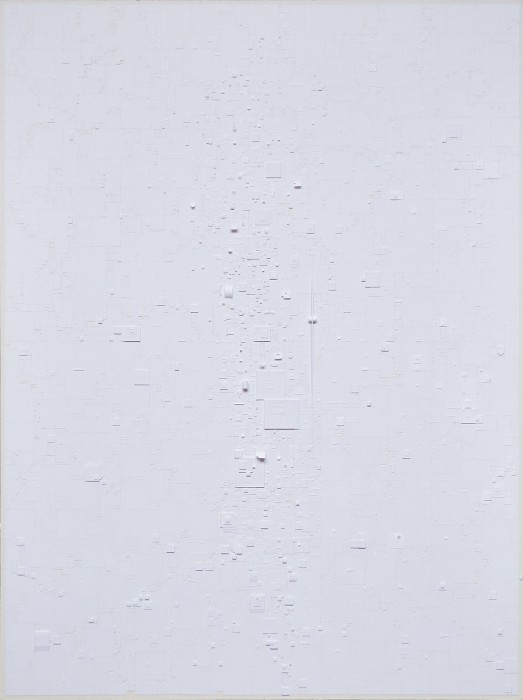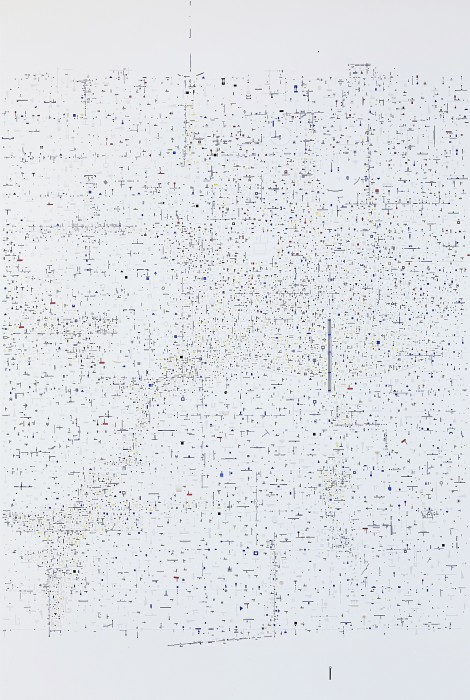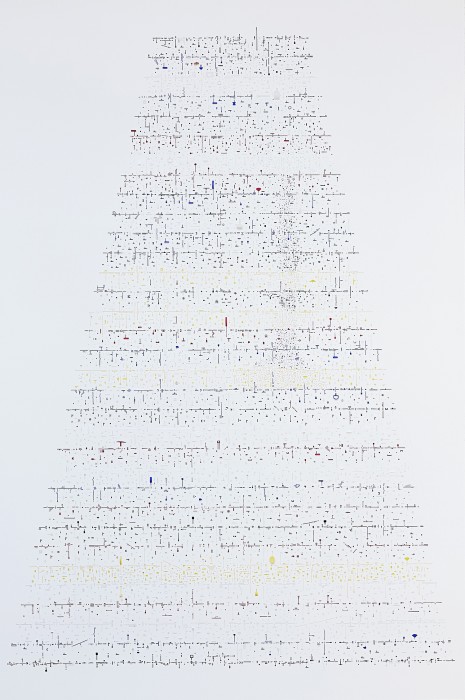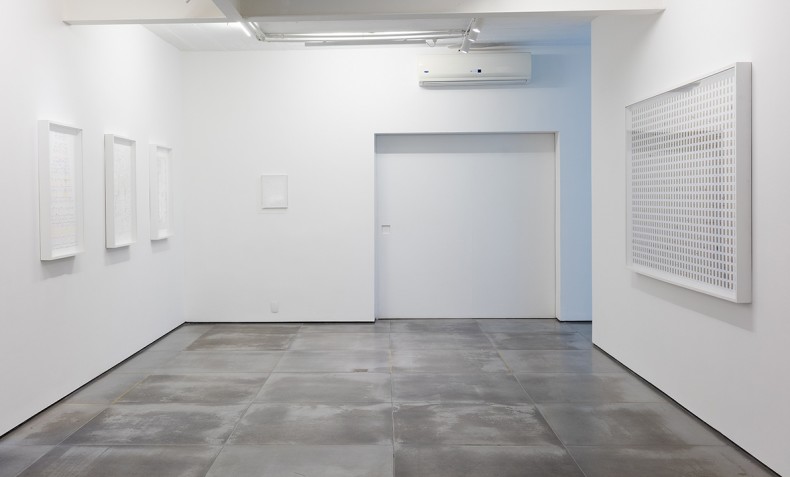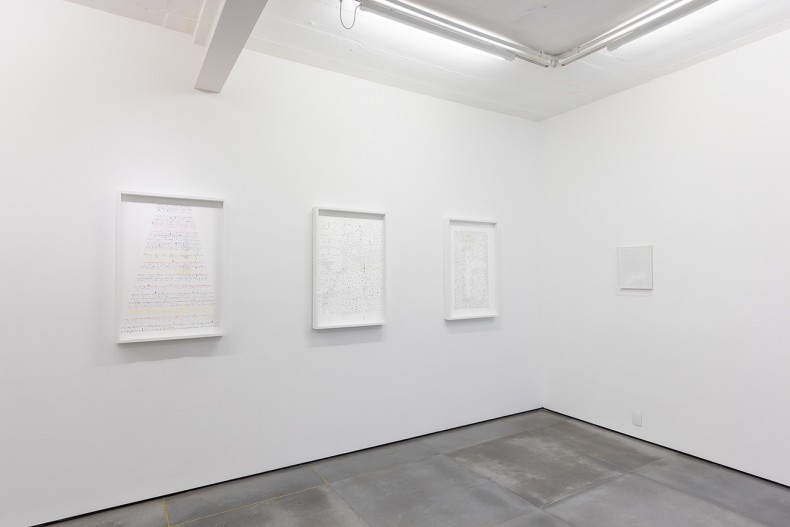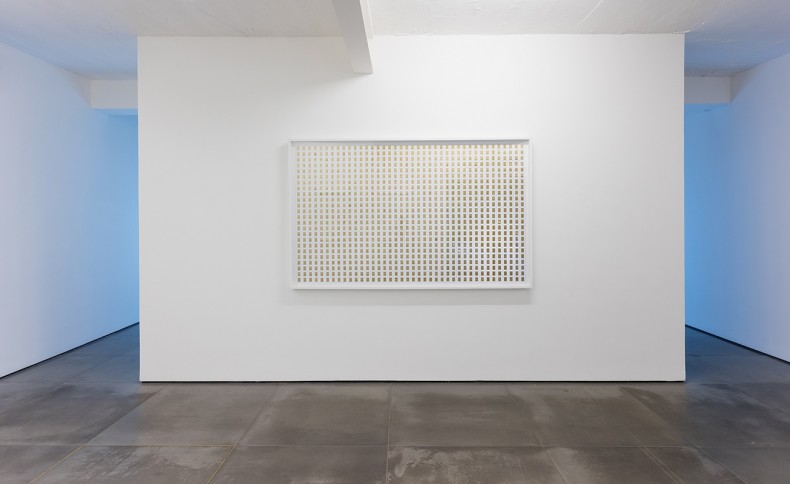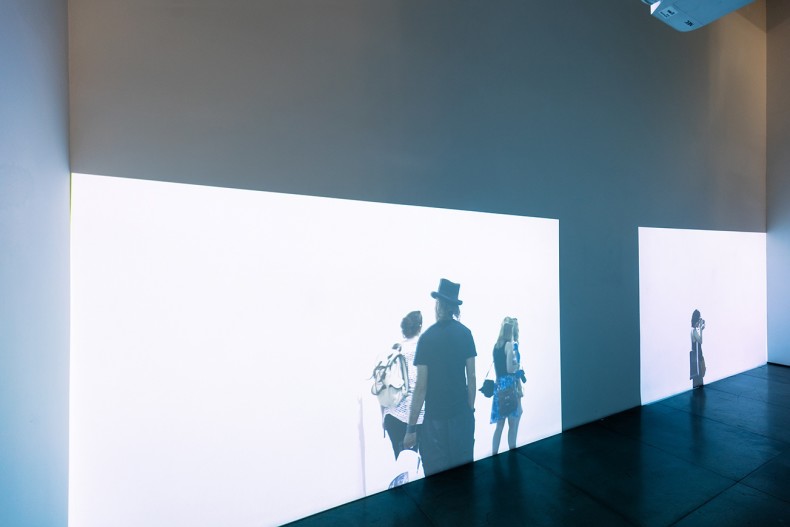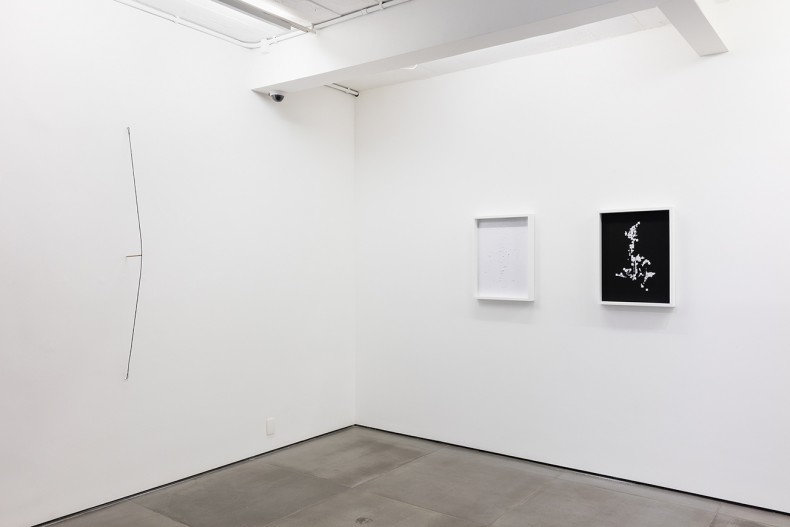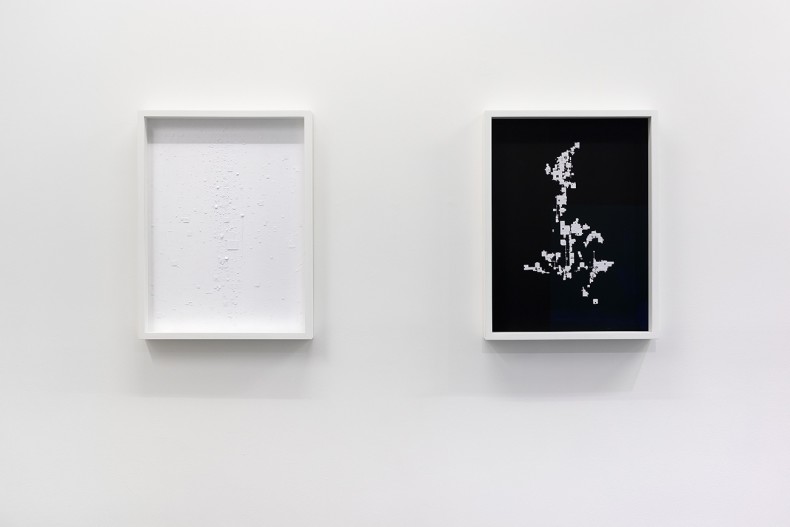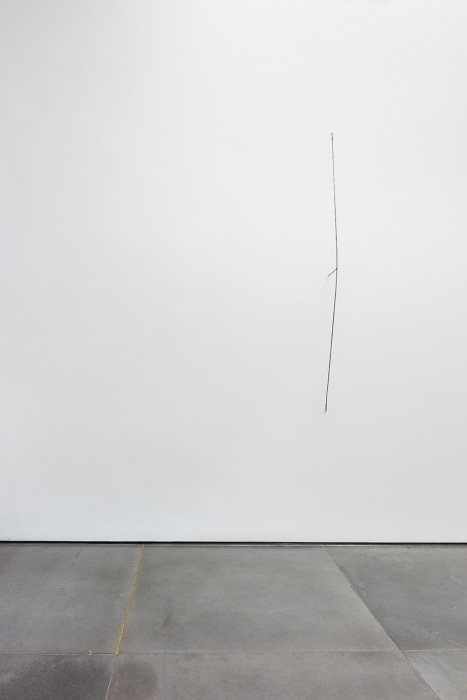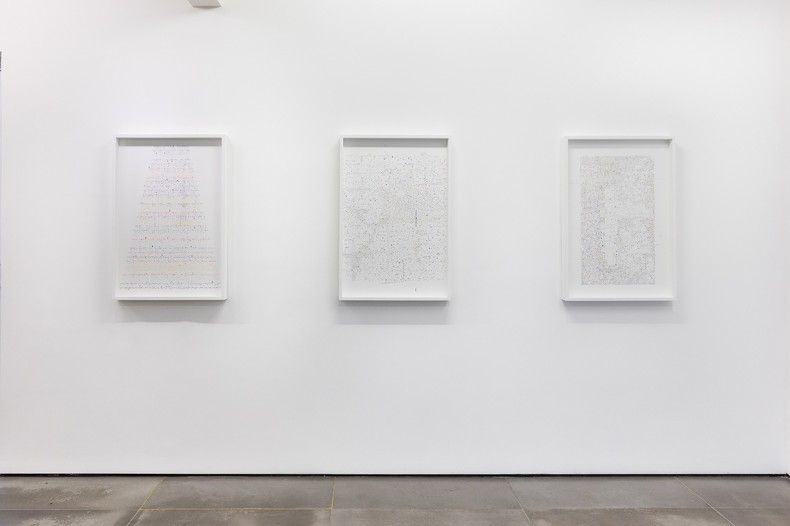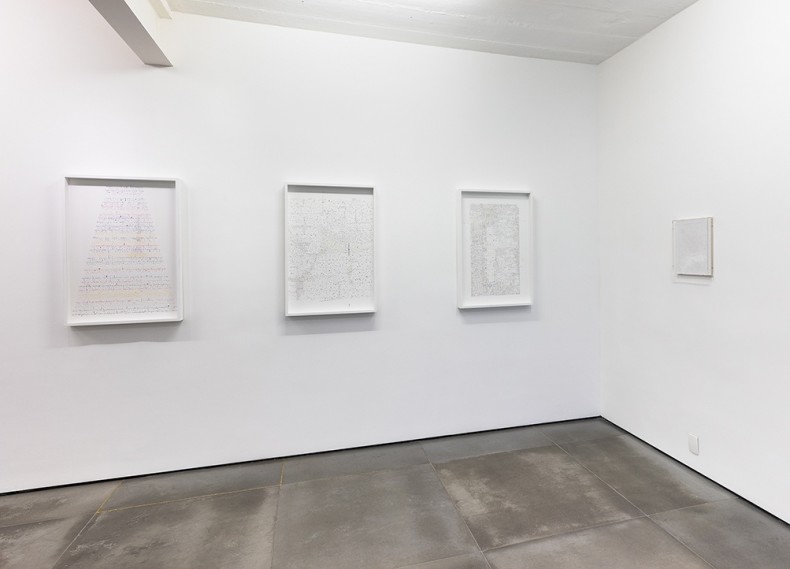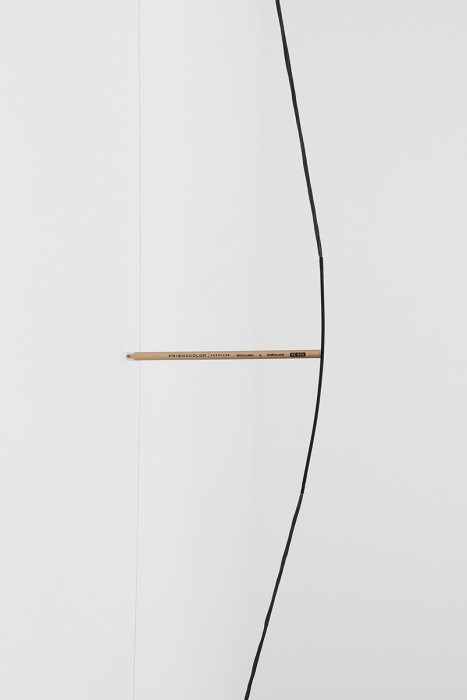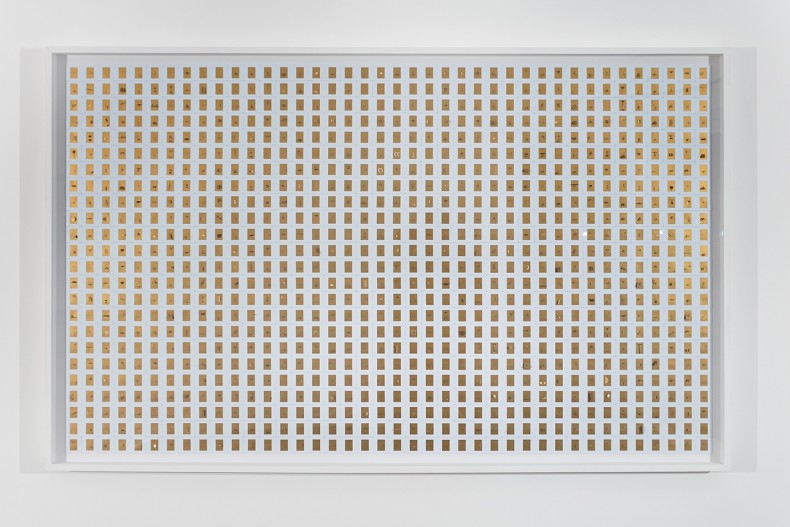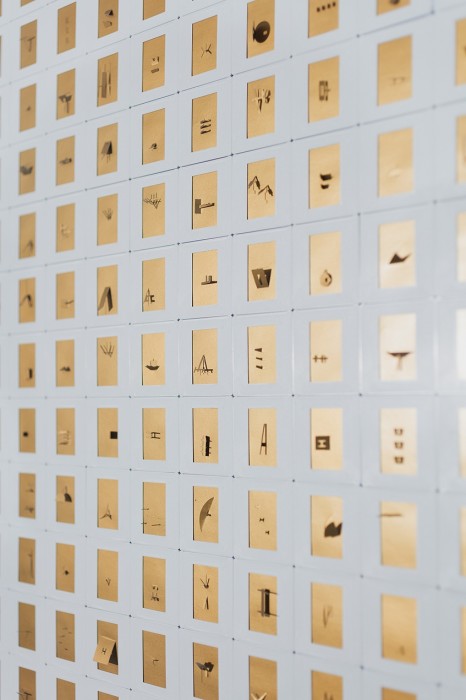|
Galeria Nara Roesler is pleased to present the exhibition “O Ouro e o Mouro” (“The Gold and the Moor”) showcasing works by Marco Maggi. The exhibition unveils drawings conceived in 2017, and presents the video Global Myopia, developed during the exhibition of the artist’s work at 56th Venice Biennial, 2015. “O Ouro e o Mouro” displays works embedded in his poetics, proposing a readjustment of temporal perception and reflecting on contemporary society’s high-traffic of visual stimuli.
In Spanish "El oro y el moro" is the greatest possible promise, described by the artist as a promise entailing “all of this and the heavens too.” He expands, “promises are a double vacuum because they will never be a present presence…always a future absence. At coffee shops, we only share faster and faster wi-fi connections. We are fascinated by speed and long distance conversations. Visual art is the opposite, a drawing is always here and now, a present presence.”
Maggi offers new viewing protocols through a threefold subversive act consisting of slowness, delicacy and optimism. The artist invites you to “imagine a contagious virus with two myopic symptoms: look closer and look slower.” The video Global Myopia, 2015, weaves a fine comment on the irony of contemporary life as the public fixates and examines with great care the work Maggi displayed during the 56th Venice Biennale, which from a distance, as in the video, can be mistaken for a plane wall. The act of close and attentive inspection unifies Maggi’s body of work, which proposes a subtle alternative dimension, which is at once small and vast. Adriano Pedrosa, points out that “it is not by chance that Maggi’s works are so difficult to be reproduced and registered in photos; it is necessary to see them live, inspect their surface, their line, carving, shadow, relief, transparency.”
While widespread excess of visual stimuli and scarcity of time precludes the possibility of a closer look, the precise and delicate works by Maggi plead for a meticulous observation. The exhibited drawings, as much of his oeuvre, employs diverse media through which he creates intricate geometric and architectural patterns. By handling calligraphy, tools, surfaces, and scales to manipulate letter size, wall size, pavilion and museum size, the artist summons the viewer’s scrutiny and focuses their gaze. A substantial golden drawing includes 960 “stops” in Gold is the new white, 2017; a self-adhesive alphabet travels through different surfaces and calligraphies in White Mending, Planar, Density Packing, and Discrete Geometry (all 2017); and a pencil drawing simply sits on paper in Spelling “D-i-s-s-e-m-i-n-a-t-i-o-n, 2017. The artist writes, "to draw is a superficial activity: dialogue between hand and surface. A discipline that allows us to take distance from the depth of thinking in order to multiply our empathy for insignificance. Drawing is like writing in a language that I cannot read”
|
